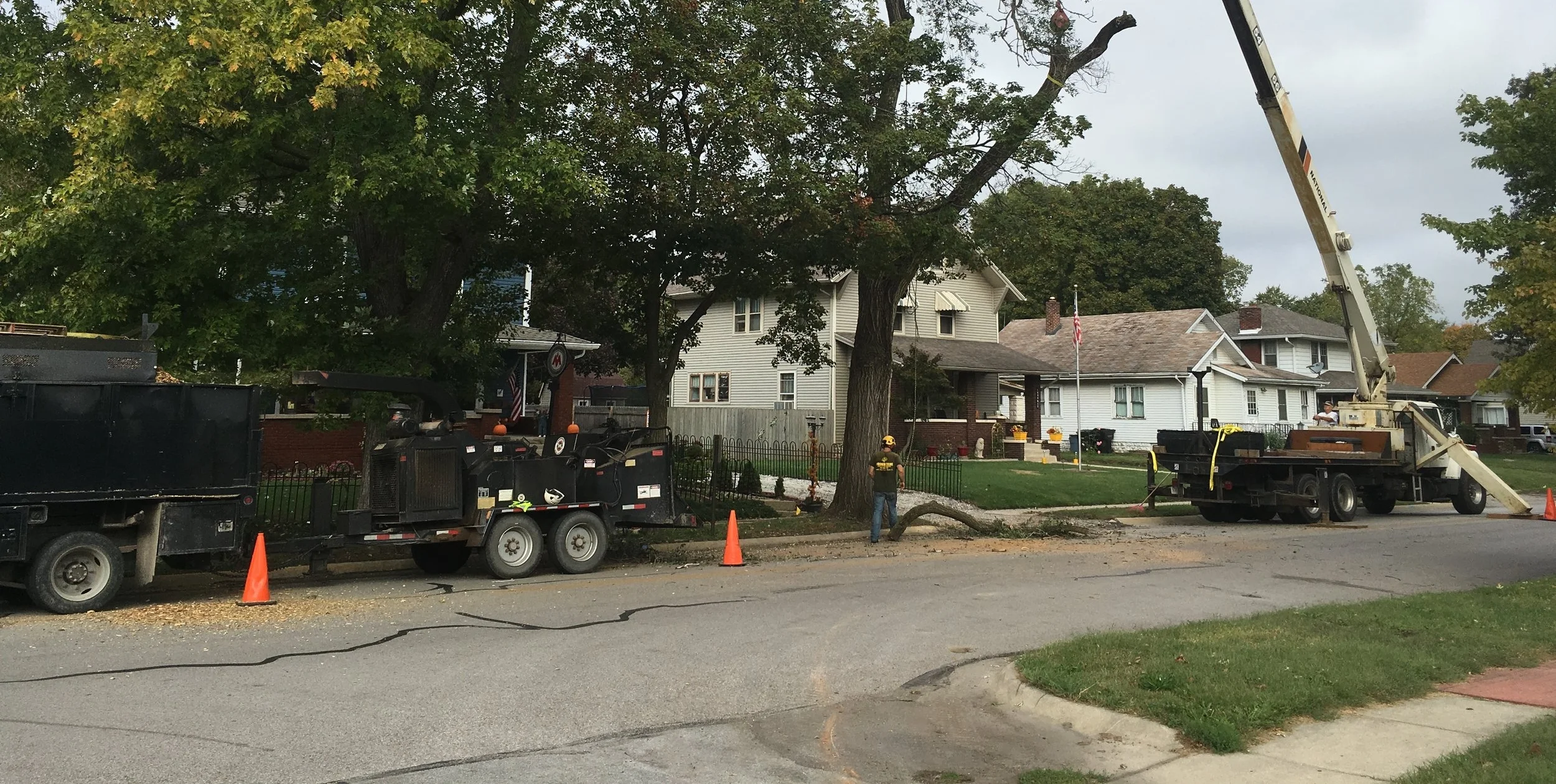A Common Tree Problem You Should Be on the Lookout For
/Most people purchase trees for their landscape, hoping the tree will grow to be tall and beautiful. However, the health and structure of a tree has a lot to do with how the homeowner cares for it. One of the best things you can do to promote proper tree structure is to prune regularly and one of the most common results of improper pruning is codominant stems. “The term codominant stems describes two or more main stems or leaders that are the same or nearly the same diameter and emerge from the same location on the main trunk. A strong central leader system is important for tree stability and for creating a resilient, sustainable tree. Trees with codominant stems fail much more readily due to the weak attachment at the trunk.” (Purdue University)
So now that you know what codominance is, how do you spot these types of trees? “It’s easy to identify. If the trunk produces two main stems that look like a slingshot—with a V union in the canopy—there is a codominance. Usually, the branches are growing very close together just above the trunk as well.” (Purdue University) How can you tell if there is a serious problem though? Classifying codominant stems into 3 risk stages can aid in their management: (Northeast Center for Urban and Community Forestry)
Risk Stage 1: does the union between the two stems form a "V" but there are no other symptoms? A "V" union is much more likely to fail than a "U" Stems with a "V" union compress bark between them as they grow, leaving little physical connection
Risk Stage 2: are there symptoms of decay in the union? Can you see rotted matter between the stems? Is there any fluid flowing from the union? Are there woody plants growing in the union? Do you see wide "ears" (swelling) on either side of the union?
Risk Stage 3: is there any sign of failure? Can you see any cracks in the union itself? Is reaction wood being formed rapidly at the base of the stems?
If you have a tree in Risk Stage 1, “there are three basic steps to removing a codominant branch structure and restoring a strong central leader branching system” (Purdue University):
Identify the best stem to become the dominant leader.
Determine which stem or stems are competing with the leader.
Remove or subordinate the competing stems to improve structure
If your tree has surpassed Risk Stage 2 or 3, then it might be necessary to contact a professional arborist to assist in pruning or removal of the tree. Browning Tree Service employs Joshua Browning ISA certified arborist license #KY-9849A who is a proud member of Indiana Arborist Association and International Society of Arboriculture, serving the West Lafayette and Lafayette, Indiana area!
Resources:
https://www.arborday.org/trees/bulletins/documents/001-summary.pdf










